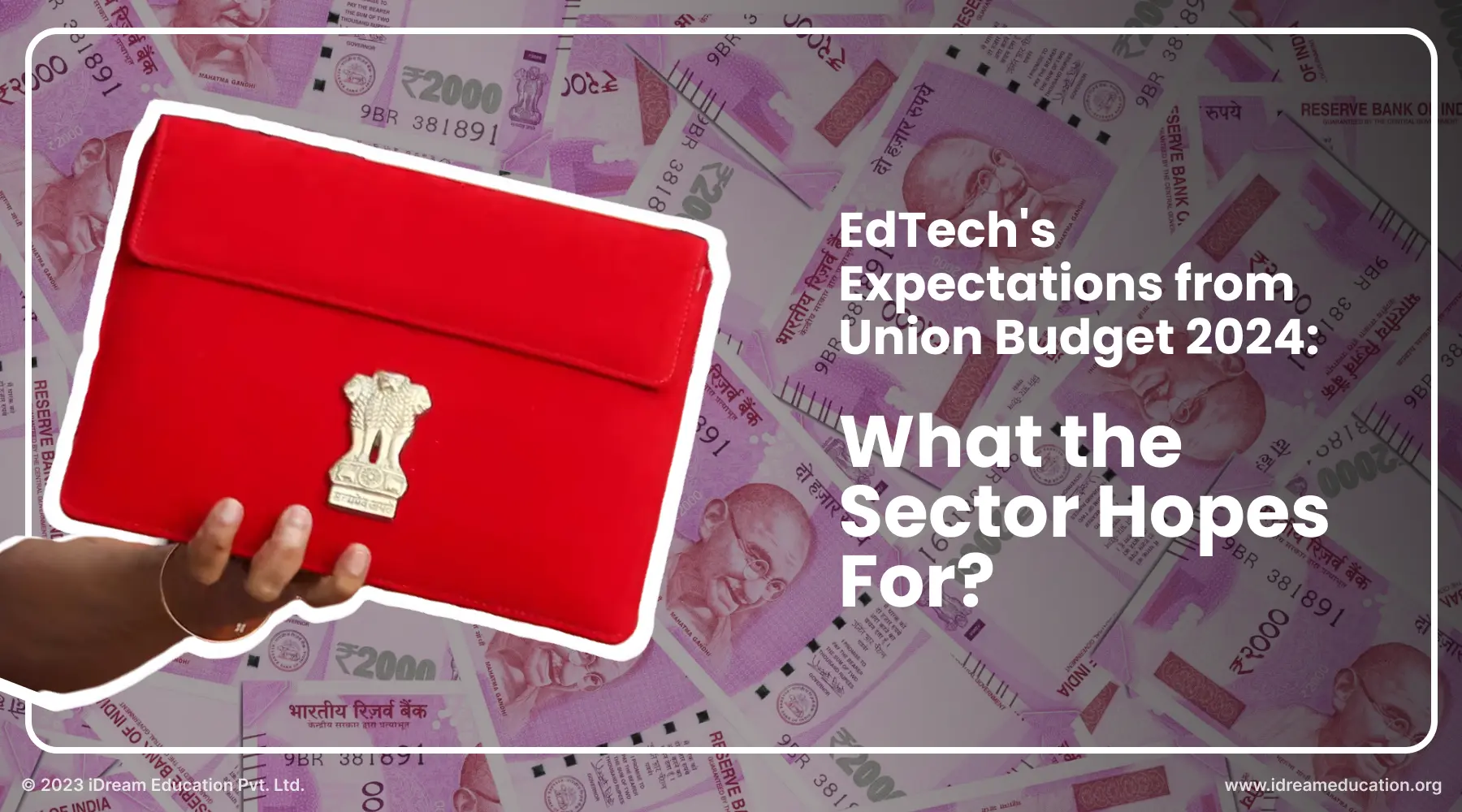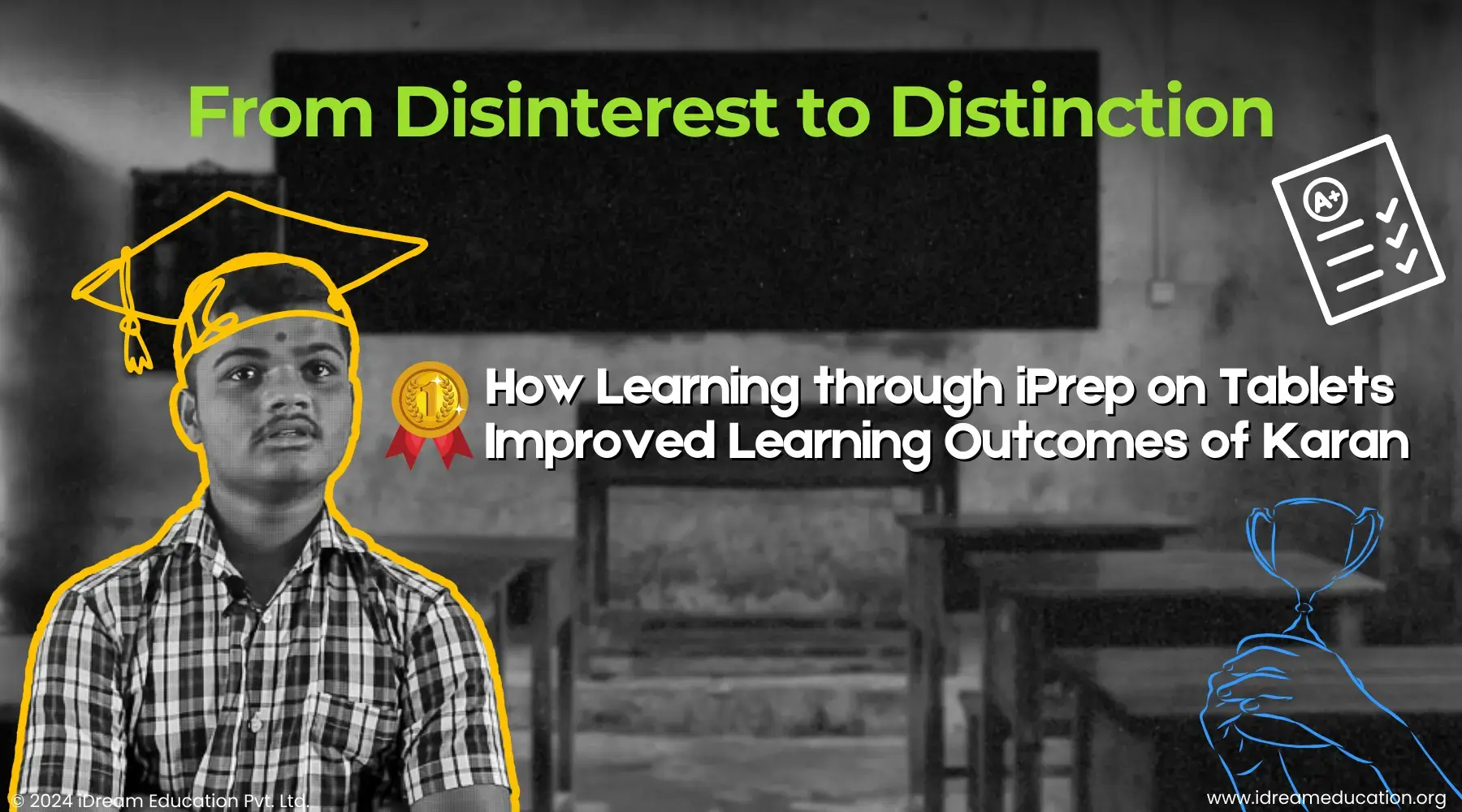Digital Project-Based Learning in Education – An Important Step Towards Holistic Development of Students
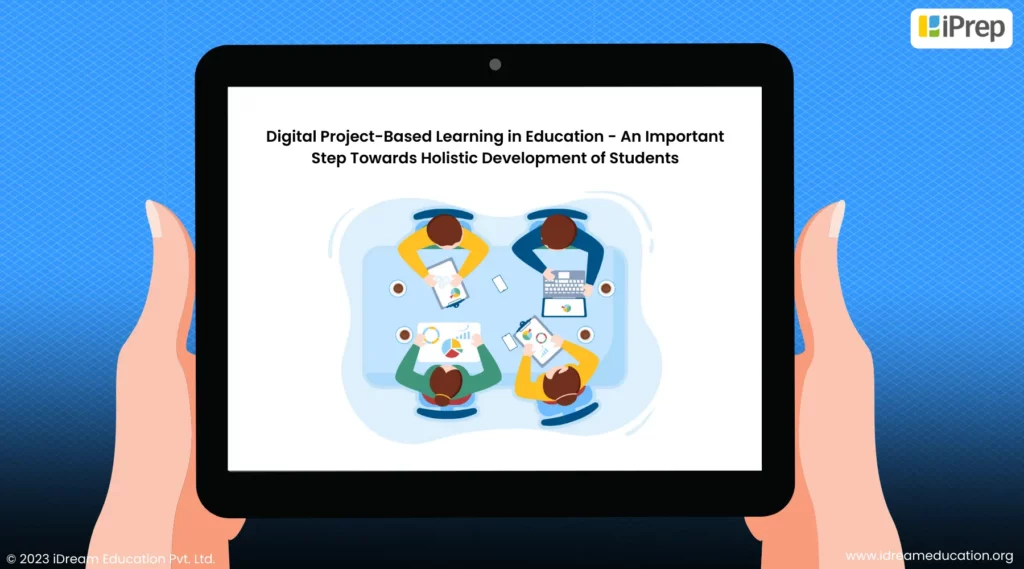
Breaking the conventional educational paradigms The National Education Policy 2023 (NEP 2023) has significantly emphasized the holistic development of students. The policy highly advocates the achievement of quality education through a holistic approach that goes beyond just rote memory.
To support this pivotal shift in our country’s educational landscape, the introduction of digital Project-Based Learning in education is crucial. Promoting critical thinking, creativity, problem-solving, and social-emotional skills in students, this step is vital for comprehensive growth.
What is Project-Based Learning in Education?
Project-based learning (PBL) in education is a student-centered teaching approach. It aligns with the evolving and dynamic needs of 21st-century learners. Project-based learning in a classroom requires students to explore real-world problems or challenges. It encourages them to think critically and find solutions in unique ways.
Going beyond traditional teaching methods, Project-Based Learning promotes a more engaging and hands-on learning experience. Presenting open-ended questions or challenges to learners, PBL supports their cognitive growth.
Let us explore the key Characteristics of Project-Based Learning in Education and how it helps students achieve holistic development.
Five Characteristics of Project-Based Learning in Education that Support the Holistic Development of Learners
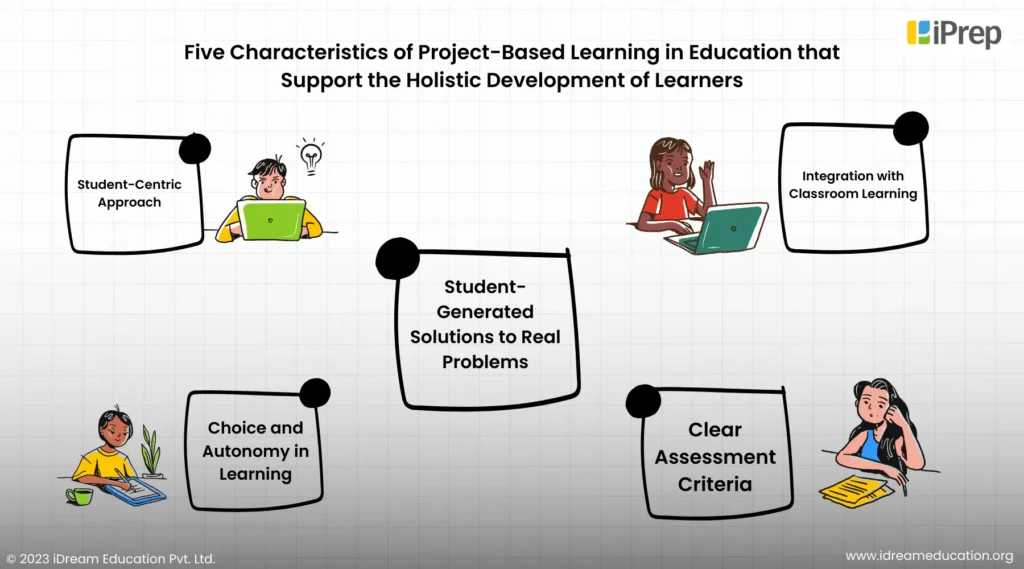
- Student-Centric Approach
Project-based learning in education lets students take charge of their learning journey. It gives them the freedom to choose their own custom learning path and explore topics that capture their interest.
Project-based learning presents difficult, open-ended questions that call for in-depth investigation and the application of current knowledge to develop answers into speeches, proposals, essays, or other concrete outputs.
With Project-based instructions, students have the freedom to choose the direction of their exploration. This way they achieve an all-rounded education while enjoying the process of learning.
- Integration with Classroom Learning
Project-based learning in education motivates students to use what they have learned in theory under practical situations.
By doing so, PBL in education helps the learners enhance their content knowledge and give learning greater purpose.
The real-world applications of the content knowledge students acquire through Project-based learning in the classroom, reinforce the connection between academic concepts and their practical utility adding value to their holistic growth.
- Choice and Autonomy in Learning
Project-based learning in Education acknowledges that students learn most effectively when enthusiastic and engaged in their learning journey. Thus PBL gives students flexibility in how they absorb information and communicate it.
Whether working in groups or individually, students can select how they want to approach problems and communicate.
By encouraging students to take charge of their education, Project-based learning promotes effective communication, collaboration, and expression of their work.
- Clear Assessment Criteria
Project-based learning in education follows a well-defined evaluation standard that is clearly communicated to students at the beginning of the project. This contains the expected grades, necessary deliverables, instructions for working in groups or alone, and any other pertinent project information.
Maintain transparency by providing students with handouts and a rubric, ensuring learners understand precisely what is expected of them. This clarity while Project-based learning in the classroom contributes to their success by aligning their efforts with the project’s objectives.
- Student-Generated Solutions to Real Problems
Effective Project-based learning in education pushes students to come up with original answers to problems from the real world, going beyond merely replicating information learned in lectures.
This involves a multi-stage process with extended inquiry, fostering critical thinking and problem-solving skills.
To ensure a comprehensive understanding of the subject matter students engage in extended inquiry to produce multiple deliverables.
Steps for Teachers to Implement Project-Based Learning in Classroom
Project-based learning in education is also known as learning by doing. This pedagogical approach benefits the holistic development of students as it roots out from the cognitive framework of Bloom’s Taxonomy that “ensures that the concepts learned are understood, instead of being temporarily memorized.“
In the classroom setting, Project-based learning in education can be implemented in two ways- traditional project-based learning and digital project-based learning.
Traditional Project-Based Learning in Education refers to a teaching strategy that has students engage in real-world projects fostering practical understanding.
Traditionally in PBL, students collaborate, problem-solve, and apply knowledge to investigate and explore topics deeply through group work. The project may end with a final presentation or product as per the requirements of the topic chosen.
Digital Project-Based Learning in Education is a version of PBL that integrates digital technologies and tools into the project work.
In digital project-based learning, students use digital platforms, resources, and tools such as the iPrep App. This is to supplement their research, create, collaborate, and present their projects.
This method frequently makes use of digital communication tools. Multimedia components such as animated video lessons, and other e-learning resources such as audiobooks, e-books, etc improve the learning process.
Beyond the limitations of traditional classrooms, project-based learning in education when supplemented with digital learning tools such as iPrep Smart Class where teachers can visually aid students during project planning and evaluation offers more opportunities for creativity, multimedia expression, and connectivity.
Although the ways of implementing are different, the 6 steps that teachers can follow to implement project-based learning in the classroom are identical-
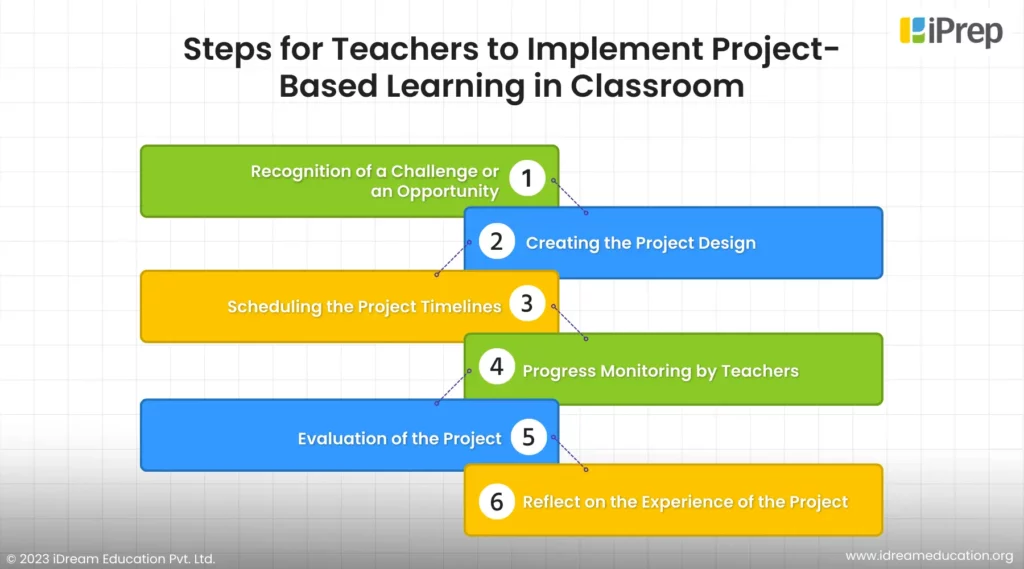
Step 1: Recognition of a Challenge or an Opportunity
- The first step to implementing project-based learning in the classroom lies in the identification of a challenge or an opportunity.
- Teachers or learners can pinpoint a problem or opportunity within their environment that demands thorough attention and seeks a resolution.
- Align this issue with the curriculum, and it may impact the school, community, city, or even the country. For example, the use of plastic bags in daily day-to-day activities like shopping, etc.
This is an inquiry-based step in project-based learning in education necessitating close attention to detail and teamwork. Map out the driving problem statement precisely into learning objectives. Develop this through the application of tools like Bloom’s Taxonomy and brainstorming.
Step 2: Creating the Project Design
- After identifying the problem, the next step in project-based learning involves planning a learning strategy.
- Here, teachers can assess how the problem or opportunity aligns with the standards they intend to teach.
- Then, they can involve students in this process through discussion to foster a sense of inclusion.
For this step of project-based learning in the classroom, teachers can select a project path that aligns with the curriculum. They can combine different subjects to improve student engagement and foster dynamic learning.
Step 3: Scheduling the Project Timelines
- This third step in PBL involves setting a timeline and schedule for project activities.
- Teachers can give students a specific date or time frame for presenting their final project work.
- Teachers can establish a realistic schedule that fully realizes the benefits of the process after discussing it with students.
Step 4: Progress Monitoring by Teachers
- Educators need to actively involve themselves in the process from the onset to the end to facilitate project-based learning in the classroom.
- Teachers should continuously monitor student work and progress.
- In this step of project-based learning, the teacher’s role should be that of a facilitator.
- To achieve the goal of project-based learning in education educators should strive to make the learning experiences meaningful for students.
Step-5: Evaluation of the Project
For the fifth step of project-based learning in the classroom, teachers should assess the learning outcomes and evaluate student participation.
- Educators can use a rubric to document students’ progress and learning outcomes.
- This will enable teachers to grade student learning against specific standards and provide effective feedback at the project’s conclusion.
- This assessment of their project-based learning will help students enhance their skills and boost their confidence.
Step 6: Reflect on the Experience of the Project
- The final step of project-based learning in education is reflecting on what worked and what didn’t in the project.
- This reflection enables teachers to refine their instructional strategies for the future.
- This also helps teachers understand their student’s learning levels. They can make changes in their teaching strategies based on the insights gained from the project.
Project-based learning in education thus is a dynamic approach that continues to evolve with time. Its simple yet effective way of engaging students in the classroom positioned it as a crucial asset. It contributes to its substantial growth within digital learning.
The Digital Spin of Project-Based Learning
To effectively engage the new generation of learners we need to go beyond the traditional paradigm. This means letting go of simple, repetitive activities used to teach basic and fragmented knowledge.
To adapt to the needs of 21st-century students who essentially come into the world with screens at their fingertips, the imperative for digital project-based learning in education becomes undeniable.
The role of Digital Project-Based Learning in Classroom
Digital project-based learning in education transcends the limitation of traditional learning methods embracing varied and complex activities tailored to the diverse interests, abilities, and needs of new-age learners.
Digital project-based learning in the classroom plays a pivotal role in preparing students for the demands of the modern world. By engaging in hands-on projects, students not only acquire subject-specific knowledge but also develop crucial real-world skills.
Critical in the 21st-century workplace, skills like critical thinking and digital proficiency are increasingly crucial for adapting to evolving demands. Thus, digital project-based learning in education enhances academic learning. This gives students real-world knowledge and skills for success in dynamic digital environments.
This paradigm shift seeks to foster curiosity, joy, and a lifelong love of learning instead of arousing fear or boredom among students. The approach of digital project-based learning in education based on the ideas of holistic education, appears as a lighthouse pointing the way to an educational environment where diverse learning needs and curiosity of students are valued.
Advantages of Digital Project-Based Learning over Traditional Project-Based Learning
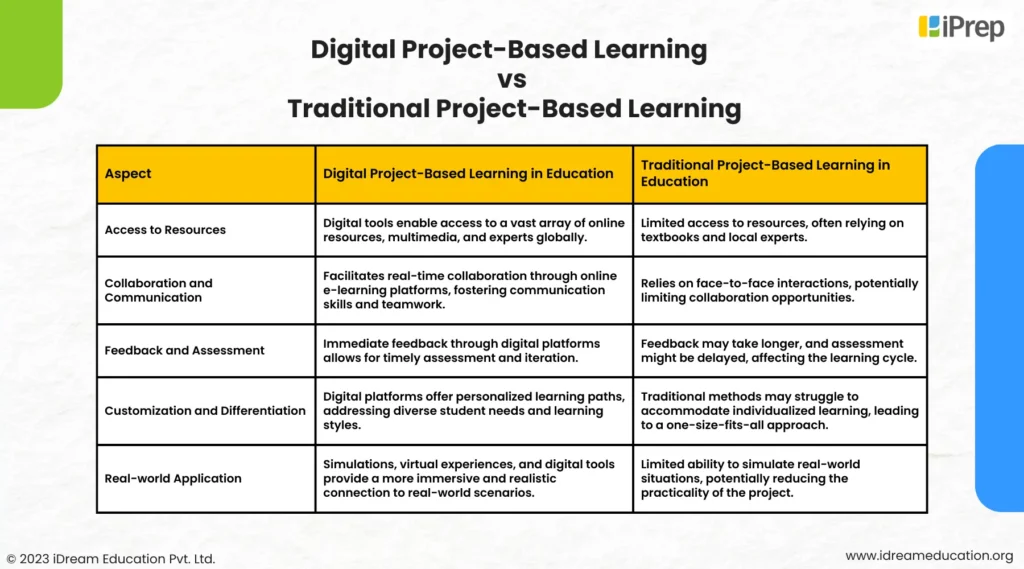
Enhancing Student Engagement with Digital Project-Based Learning in Classroom
Project-based learning in education, as mentioned earlier, is rooted in the idea that learning should be organized around interesting projects. Additionally, it involves students in active investigation and exploration, resulting in a comprehensive understanding of concepts.
Digital project-based learning in education can be achieved with the help of interactive video lessons, practical application lessons, and stimulation present in digital learning platforms such as iPrep for K-12 learning. Teachers can use such digital project-based learning tools to demonstrate real-world applications right inside the classroom with the help of smart class maximizing student engagement to great levels.
Here is a video representation of a project-based learning experience for a Class 8 mathematics lesson on the topic ‘Areas of a Triangle’ that is readily available on the iPrep digital learning platform.
For more details on the role of digital project-based learning in education, please refer to this report that focuses on Project-based learning (PBL) through the incorporation of digital technologies.
Conclusion:
To conclude, the National Education Policy is taking significant steps to ensure that students acquire holistic learning in schools. By enhancing project-based learning in education coupled with digital learning tools and technology, the holistic development goals of NEP 2023 can be achieved.
If in case you would like to know more about the interactive video lessons for K-12 on the iPrep digital learning platform by iDream Education, visit their website, www.idreameducation.org, or write to us at share@idreameducation.org


